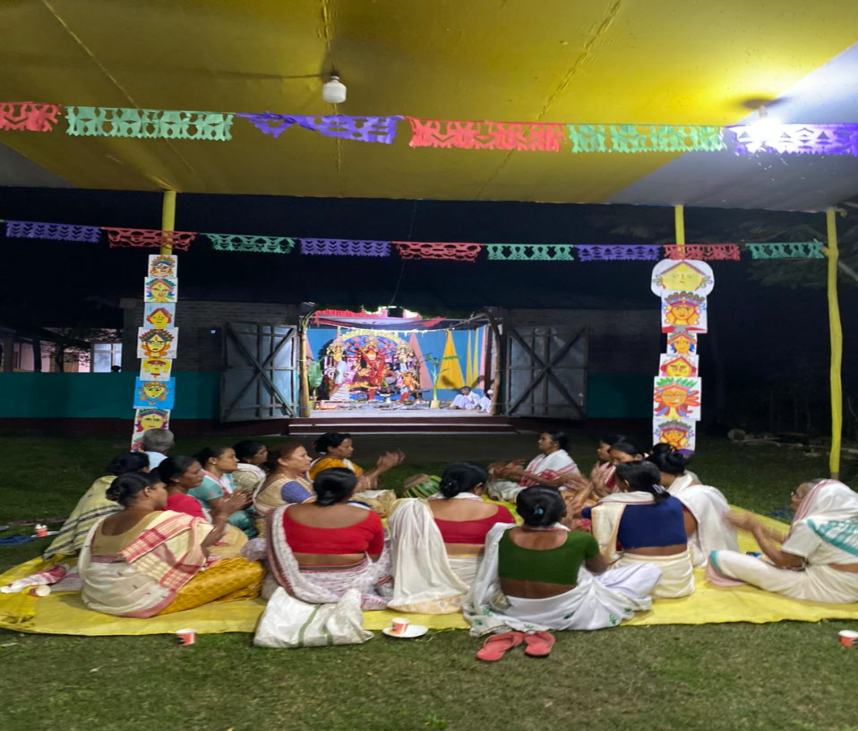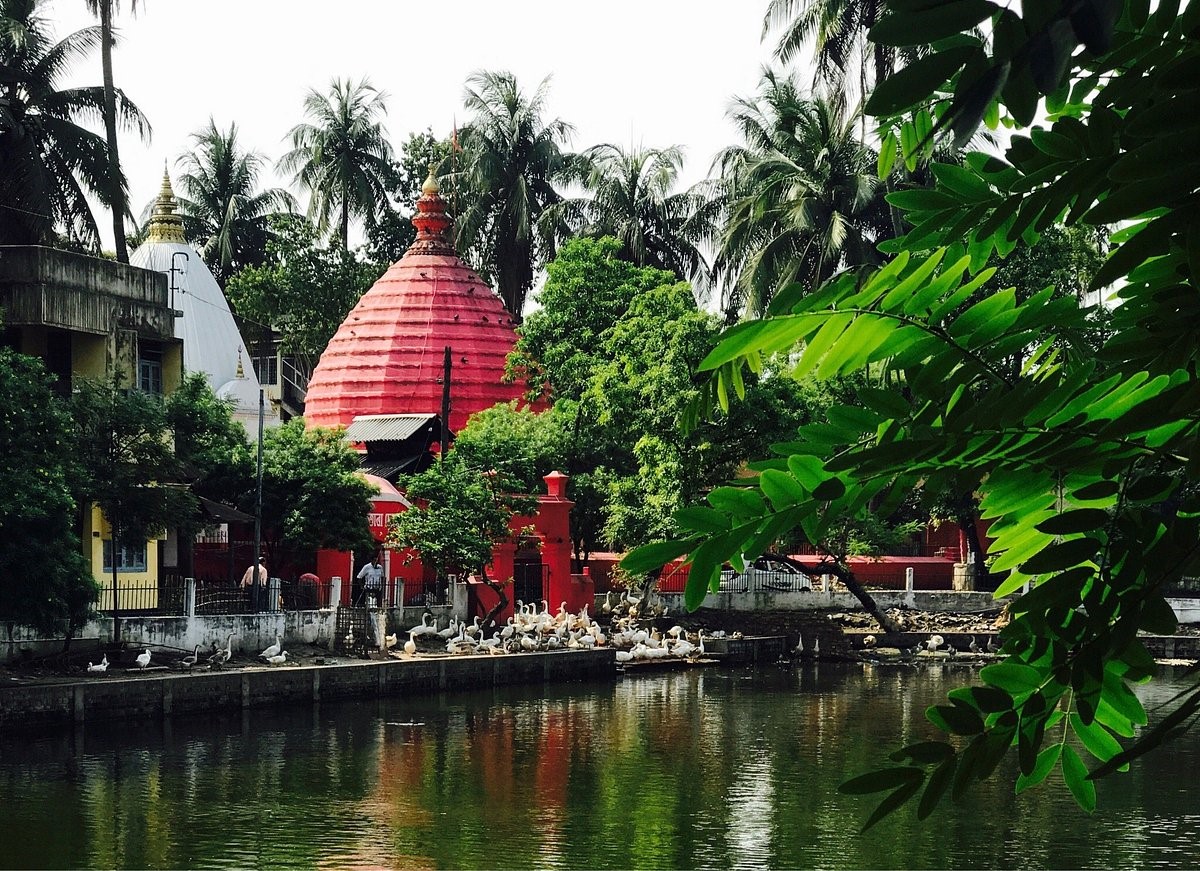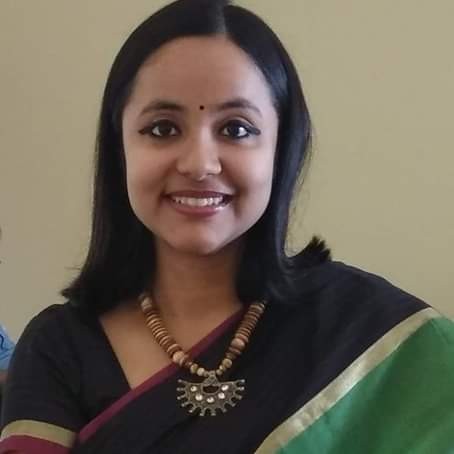Sakti Worship and the Glorious Tradition of Durga Puja in Kamrup
- In Religion
- 12:55 PM, Dec 16, 2023
- Ankita Dutta
Historically speaking, the region of Kamarupa (present-day Assam) has been revered as the original centre for the followers of the Sakta panth of Hindu Dharma. Located on the Nilachal hills on the south bank of the mighty Brahmaputra in Guwahati, Assam, the Ma Kamakhya Saktipeeth is the primary centre of worship for all Sakta sadhakas. The present-day structure of the Kamakhya temple was rebuilt by Koch King Naranarayan after the original one was destroyed by Muslim invaders led by Kalapahar, a General of the Afghan ruler of Bengal Sulaiman Kareni. The entrance to the temple was later constructed by the Ahoms.
The garbhagriha at Kamakhya houses not a murti, but a rock shaped like a vulva from which red-coloured water oozes out continuously at all times, in all seasons. The rites and rituals that can be observed at several Saktipeeths of Assam and the North-East including Kamakhya, are intense and traditional, rooted in the Tantric paddhati of worship. A few historic temples such as the Burha Goxai Thaan at Howli, Mohanpur in the Darrang district of Lower Assam, the Ugratara Devalaya in Guwahati, and the Bilbeswar Devalaya at Belsor, Nalbari have preserved their timeless tradition of celebrating Durga Puja in their own unique and distinctive ways.
It was around circa 1615 that Koch King Dharma Narayan is said to have shifted the capital of his Kingdom from Kerkeriya in the foothills of Bhutan to Mohanpur, the then-capital of present-day Darrang district. In recorded history, the first grand worship of Ma Durga in Assam was begun by Bali Narayan, the King of Darrang in 1614 AD. It was Koch Raja Naranarayan who had first initiated the worship of Durga in Assam during Sharad Navratri by making clay murtis of the Devi. Naranarayan and his most trusted General Shukladhwaja (Chilarai) had also played a key role in thwarting all attempts of the Islamists to occupy Assam.
The Durga Pujas that were organised under the patronage of the royal family of Darrang and the family of the Koch Minister Kabindra Patra (formerly known as Rangamati Baruas and now famously called Gauripur Baruas) trace their origins to the early decades of the 17th century. The tradition of offering Puja to the clay murti of Ma Durga spilled across the borders to the Ahom Kingdom during the reign of Swargadeo (King akin to a Devata) Pratap Singha. The Ahoms came to know about the worship of Durga and the earthen murti of Ma Durga preserved by the Koch Kingdom when friendship grew between Maharaj Naranarayan and the Ahom Swargadeo Chufamfaa.
The clay murti of the Devi now began to be worshipped at Bhatiapara village, situated on the Western banks of the Namdang river in Assam’s Sivasagar district. In fact, the first recorded Durga Puja in the Ahom Kingdom took place at Bhatiapara, sometime in the 1640s. The murtis for this Puja were made by the Khanikars of Marangiyal, on the lines of the tradition started by the idol-makers of the Koch Kingdom. Thus, the practice of worshipping the clay murti of Durga heralded the beginning of a new period of Sakti worship in the Brahmaputra Valley, which was further consolidated during the reign of the Ahom Swargadeo Gadadhar Singha and his son Rudra Singha.
Both the father and the son were devout Shaivites and worshippers of Sakti. But it was the Ahom Swargadeo Siva Singha and his Queen Bar Raja Phuleswari Devi who actively promoted the worship of Sakti, especially Ma Durga. Siva Singha had taken deeksha from a Brahmin named Krishna Ram Bhattacharyya (commonly known as Parbatia Gosain) hailing from Nabadweep in Bengal. Durga Puja was celebrated with pomp and fanfare during the rule of the later Ahoms too. Some families even organised household Pujas with royal consent, but in an extremely modest manner and with smaller murtis.
With the arrival of the British in the late 18th and the early 19th centuries, families of the Ahom royals such as Tamuly Phukan, Silpani Barua, Rasendra Barua, Kalicheng Barua, Parbatia Phukan, Dowerah Kakati, Chaliha Kakati, Paragania Choudhury (of Elengidal, Nalbari) and others began celebrating Durga Puja in their homes every year. However, it was mostly Ghot Puja (worshipping an urn symbolizing the Devi) and in only rare instances were clay murtis made for the Puja. The Durga Puja at the Jorhat residence of freedom fighter Maniram Dewan when he was the Barbhandar Barua in the administration of the Ahom ruler Purandar Singha, is well-documented.
An idol-maker named Budhuram Khanikar was invited from Charing and after completion of his work was presented with silver coins, a piece of attire, a storage container for the local pigments Hengul-Haital, and a heifer buffalo. Over the course of the 19th century as the British Raj consolidated, some native officials in the administrative set-up, such as the Darogas, Mauzadars, Pleaders, and Vakils also instituted Durga Puja among their household rituals. The Pujas organised at the residences of Kaliprasad Ukil (Sivasagar), Purnananda Barua Daroga (Jorhat), Janaki Ukil (Nagaon), and Hazari Mouzadar (Jorhat) are noteworthy in this regard.
Affluent traders and urban elites like Dharma Narayan Ghosh of Goaltuli (present-day Goalpara district of Lower Assam) and the local tea planters celebrated Durga Puja in a grand fashion, gradually giving rise to elaborate festivities and popular forms of entertainment such as song, dance and quiz competitions. Jatra parties from Bengal were invited by some families to perform in the evenings. Some families like the Lakshmi Prasad Barua family of Uzanbazar area in Guwahati were some of the early initiators of co-acting in theatre performances (held in the evening hours of Navami). With the passage of time as the power equations changed, so did people’s economic status.
Many of these household Durga Pujas now ceased to exist – paving the way for Sarbojanin (public) Pujas like the Barowari Durga Puja at Uzanbazar and Hari Sabha Durga Puja at Panbazar, both in Guwahati. This transformation of a festival from a rural family ritual to an urban one was clearly visible in Assam in the 20th century. However, certain local, unique features of the Durga Puja festival celebrated in different parts of Assam still stand out among all others. For instance, the murti of Ma Durga at the Gauripur Rajabari Puja in Dhubri district is made of sholapith or kuhila. Another famous Puja held at Puranigudam in Nagaon district boasts of a tradition of wooden murtis of the Devi, started by one Lerela Khanikar in 1901.
The rites and rituals at the Burha Goxain temple in Darrang district are also unique for that matter. The temple is surrounded by an earthen fort (Garh) with two temple ponds located amidst the then residential settlement of the Koch royal family of Darrang. The locals believe that it was during the reign of King Dharma Narayan in circa 1620 that the worship of Ma Durga had first begun in the premises of the Burha Goxai temple. Durga Puja is the main festival held here, besides Kali Puja, Jagaddhatri Puja, Annapurna Puja, and Ma Manasa Puja. The history of the temple dates approximately 400 years and back, with some artefacts and shrines perhaps being even older.
They provide glimpses of the rich cultural heritage and religious practices associated with the temple since antiquity. The prasadam (known as Gosani Bhog) consists of offerings of fish and meat made to the Devi, influenced largely by the local eating habits. The tradition of bali-pratha (animal sacrifice) in many of these Pujas is on the decline, courtesy the animal rights activists and their call for “animal welfare”. However, a distinctive feature of the Puja held at the Burha Goxain temple is the worship of weapons and other royal belongings. This custom is commonly known as Dar Puja. The Ram Dao (sacrificial sword) used earlier for animal sacrifices at the temple is circumambulated in the early hours of Vijayadashami.

Women performing Vaishnavite naam-kirtan in the Durga Puja held at the Burha Goxai temple
Currently, the temple houses a Yonipeeth (locally known as Linga), several small murtis, utensils used during Durga Puja events, and temple manuscripts. The murti worshipped by the royal family of Darrang in the Durga Puja at this temple is smeared with red colour.
In the Ugratara Devalaya of Guwahati, it is believed that Devi Ugratara resides in the form of three different avatars – Chamundi, Dakshina Kali, and Neel Saraswati. Jor Pukhuri, the famous tank situated towards the West of Ugratara attracts hordes of visitors every day, feeding the swans who have now almost attained a near cult stature. Thousands of devotees throng to be a part of the age-old tradition of buffalo sacrifice at the Bilbeswar Devalaya in Nalbari on the day of Mahanavami during the annual Durga Puja festivities. Besides Bilbeswar, the 530-year old Durga Puja at Barnardi village in Nalbari is one of the oldest in Assam.

The famous Jor Pukhuri at Ugratara Devalaya in Guwahati
Several local elements have influenced the religious rituals in the temples of the North-East since antiquity. For example, the usage of meat and fish as prasadam in the Saktipeeths here often intrigues people from other parts of the country. Bali pratha is a distinctive anthropological and geographical feature in these temples, influenced by the lifestyles, food habits and traditional religious belief systems of several hundreds of vanavasi communities residing here. The matriarchal family system is prevalent among many communities of the Brahmaputra Valley, besides the Khasis, Garos, and Jaintias of Meghalaya. It is thus a religious custom among several such communities to worship Sakti.
(The photos used in the article are from the author’s personal collection).
Title image source: ETV Bharat







Comments